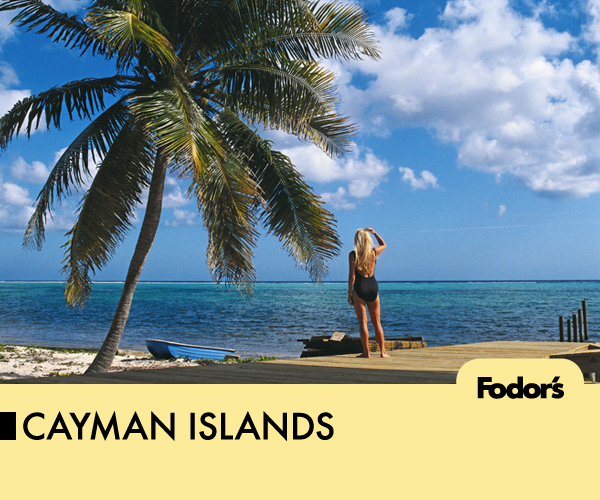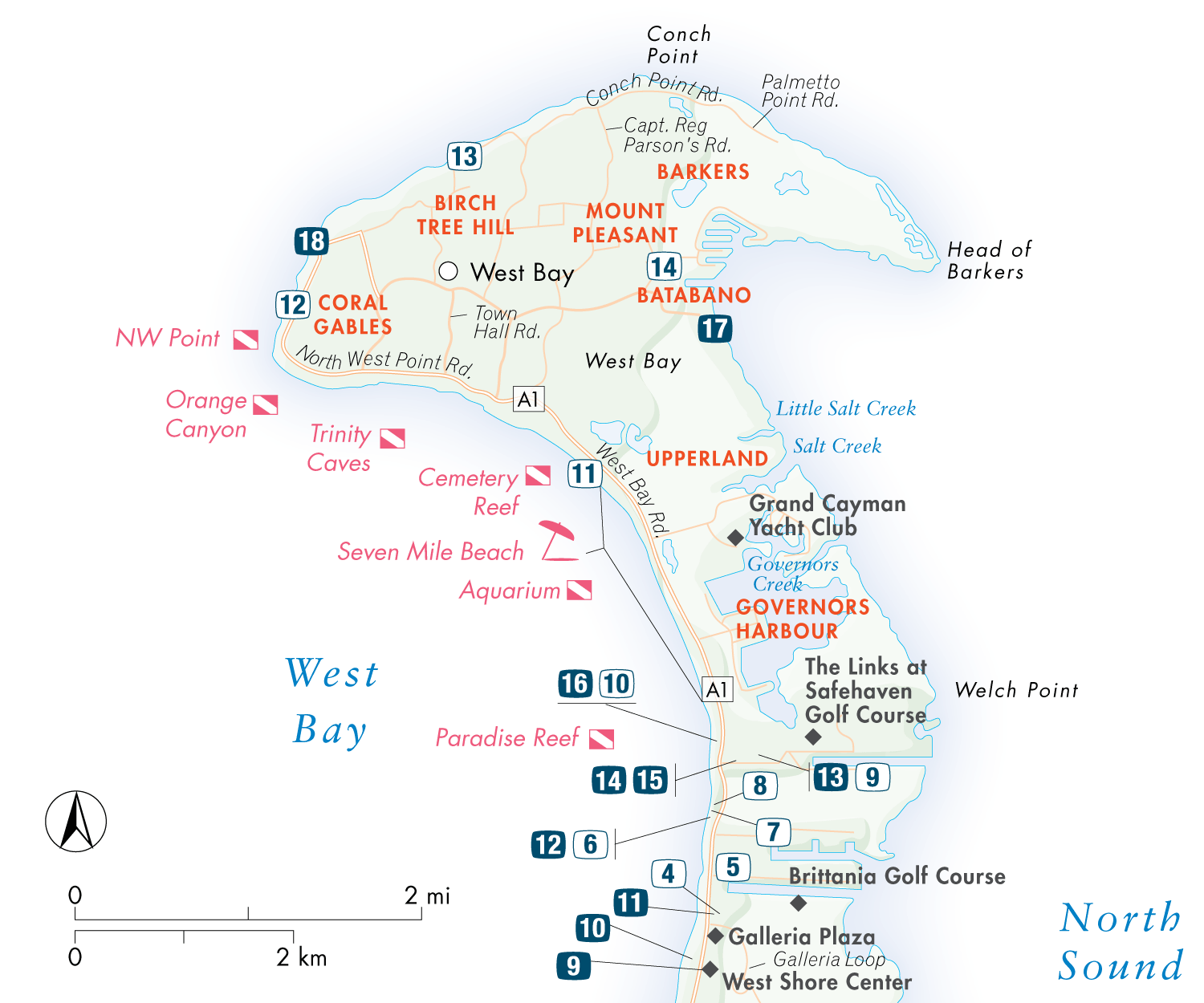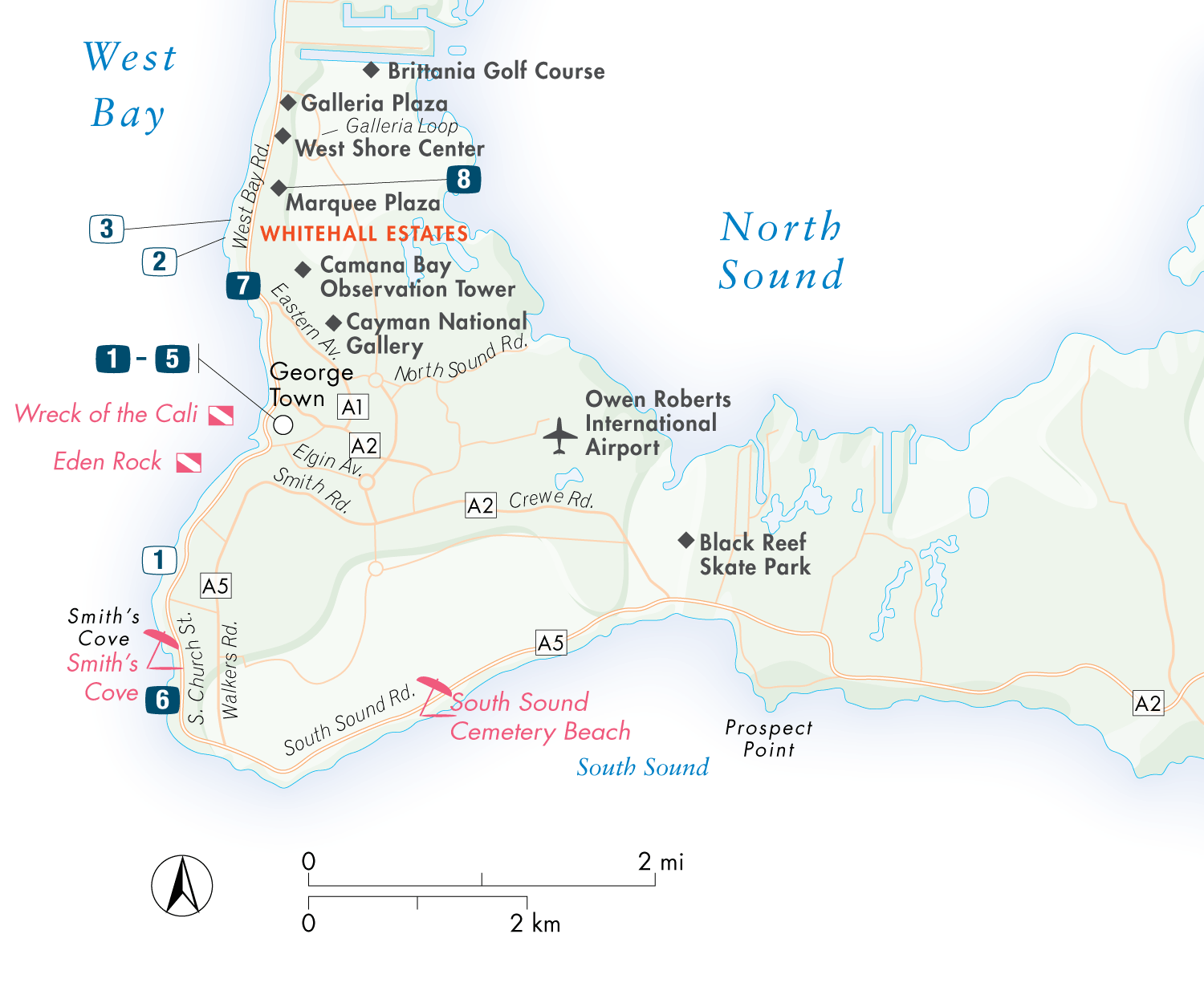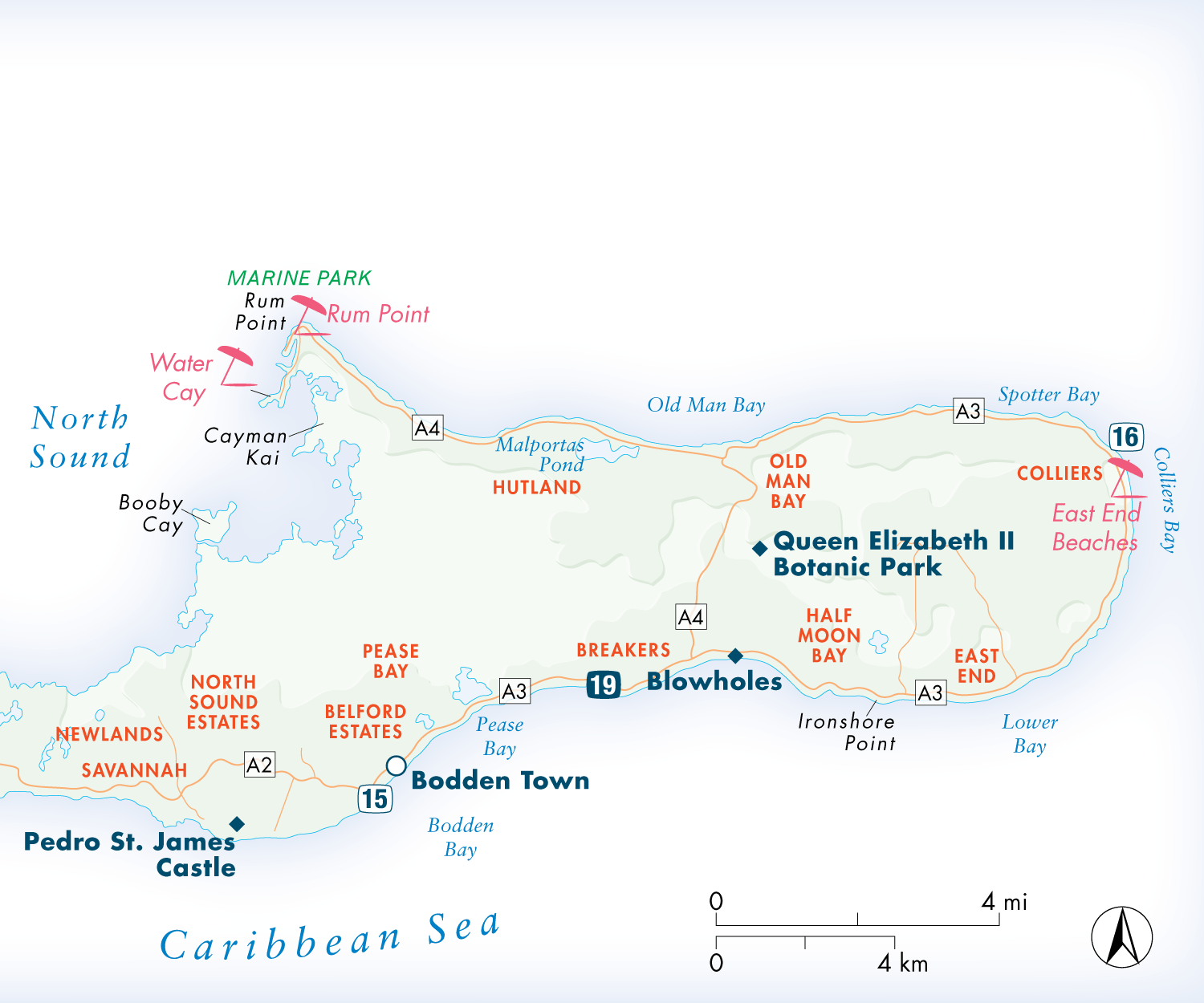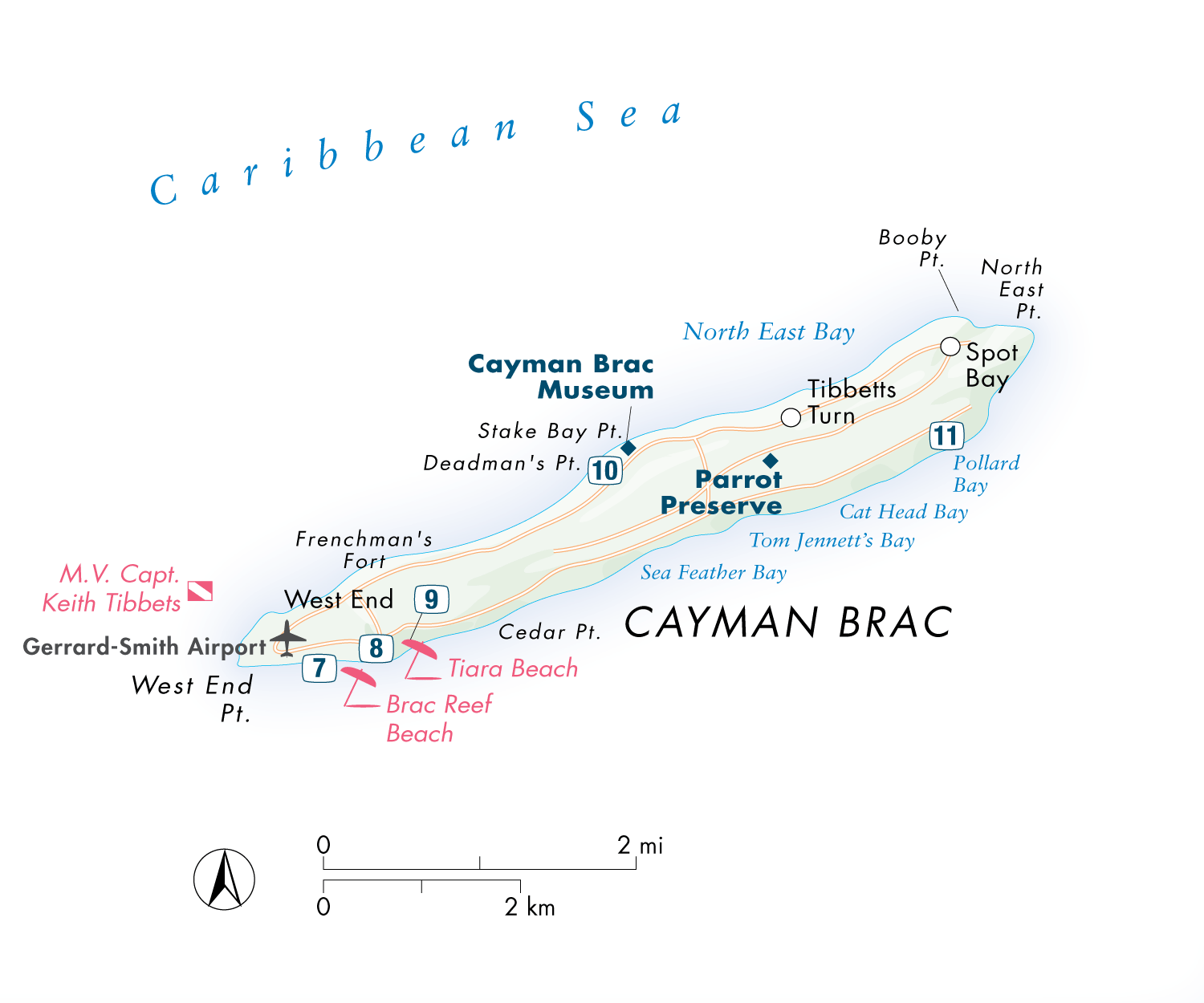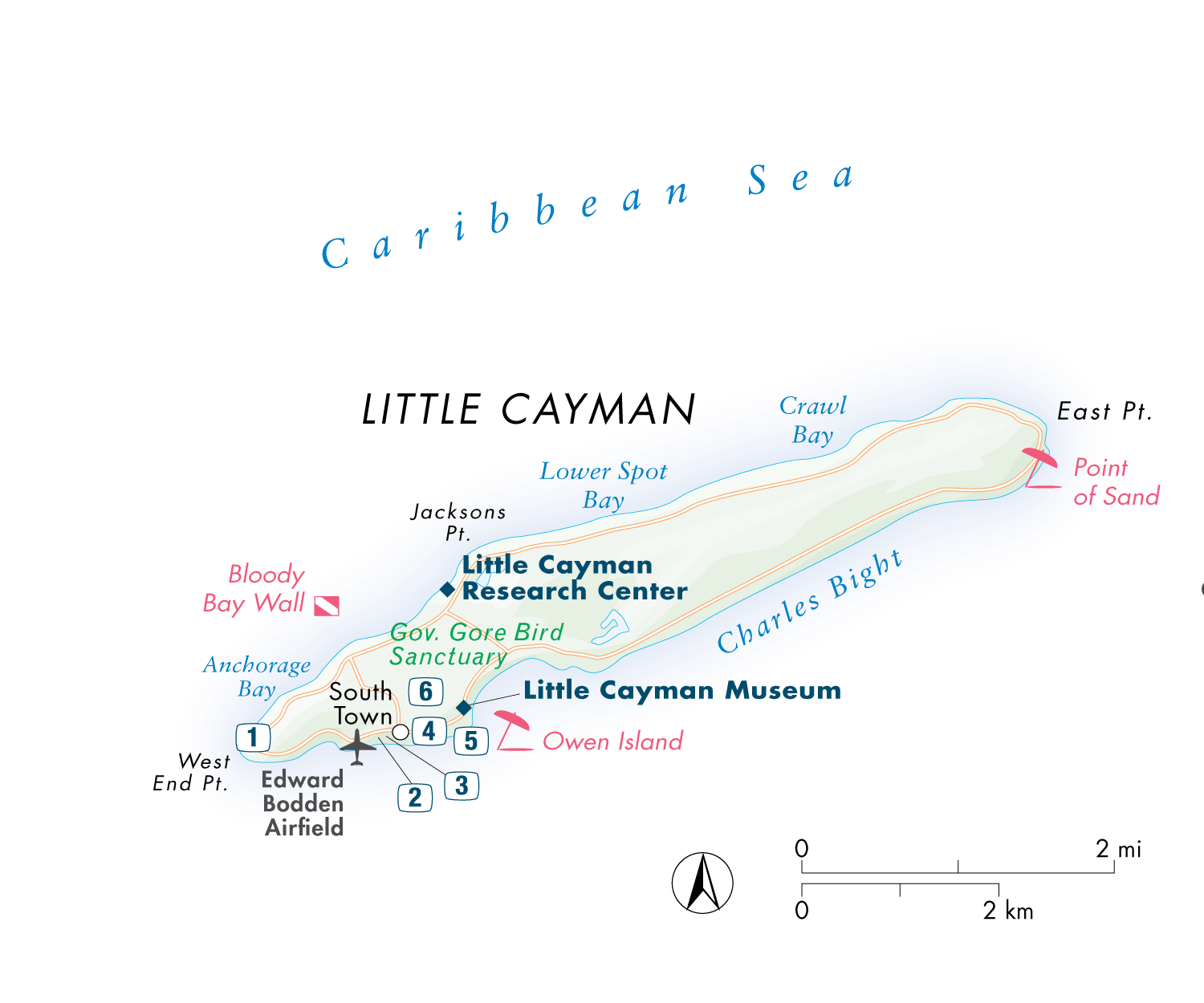WELCOME TO CAYMAN ISLANDS
This British Overseas Territory, which consists of Grand Cayman, smaller Cayman Brac, and Little Cayman, is one of the Caribbeans most popular destinations, particularly among Americans, who have become homeowners and constant visitors. The islands extensive array of banks also draws travelers. There are relatively few signs of the devastation caused by Hurricane Ivan in 2004, and Cayman Brac has almost completely recovered from Hurricane Paloma in November 2008.
Columbus is said to have sighted the islands in 1503 and dubbed them Las Tortugas after seeing so many turtles in the sea. The name was later changed to Cayman, referring to the caiman crocodiles that once roamed the islands. The Cayman Islands remained largely uninhabited until the late 1600s, when England seized them and Jamaica from Spain. Emigrants from England, Holland, Spain, and France arrived, as did refugees from the Spanish Inquisition and deserters from Oliver Cromwells army in Jamaica; many brought slaves with them as well. The Cayman Islands caves and coves were also perfect hideouts for the likes of Blackbeard, Sir Henry Morgan, and other pirates out to plunder Spanish galleons. Many ships fell afoul of the reefs surrounding the islands, often with the help of Caymanians, who lured vessels to shore with beacon fires.
Todays Cayman Islands are seasoned with suburban prosperity (particularly Grand Cayman, where residents joke that the national flower is the satellite dish) and stuffed with crowds (the hotels that line the famed Seven Mile Beach are often full, even in the slow summer season). Most of the 52,000 Cayman Islanders live on Grand Cayman, where the cost of living is at least 20% higher than in the United States, but you wont be hassled by panhandlers or fear walking around on a dark evening (the crime rate is very low). Add political and economic stability to the mix, and you have a fine island recipe indeed.
TOP ATTRACTIONS
Underwater visibility (about 120 feet) is among the best in the Caribbean, and nearby, healthy reefs make this one of the Caribbeans top dive destinations.
With no panhandlers, little crime, top-notch amenities, and an excellent range of accommodations, its an easy place to vacation.
Its cosmopolitan population extends to the varied dining scene, from Italian to Indian.
A snorkeling trip to Stingray City is an experience youll always remember.
Grand Caymans Seven Mile Beach is one of the Caribbeans best sandy beaches.
GETTING ORIENTED
Grand Cayman, which is 22 mi (36 km) long and 8 mi (13 km) wide, is the largest of the three low-lying islands that make up this British colony. Its sister islands (Little Cayman and Cayman Brac) are almost 90 mi (149 km) north and east. The Cayman Trough between the Cayman Islands and Jamaica is the deepest part of the Caribbean.
Restaurants
Hotels
Restaurants
Hotels
Beaches
Restaurants
Hotels
Beaches
Hotels
Hotels
Beaches
CAYMAN ISLANDS PLANNER
LOGISTICS
Getting to the Cayman Islands: There are plenty of nonstop flights to Grand Cayman (GCM) from the United States. Most people hop over to the Brac and Little Cayman (LYB) on a small plane from Grand Cayman; a weekly nonstop from the Brac to Miami may be reinstated. Flights land at Owen Roberts Airport (Grand Cayman), Gerrard Smith Airport (Cayman Brac), or Edward Bodden Airstrip (Little Cayman).
Hassle Factor: Low for Grand Cayman; medium for Little Cayman and Cayman Brac.
On the Ground: In Grand Cayman you must take a taxi or rent a car at the airport since most hotels are not permitted to offer airport shuttles. Hotel pickup is more readily available on Cayman Brac and Little Cayman.
Getting Around: Its possible to get by without a car on Grand Cayman if you are staying in the Seven Mile Beach area, where you could walk, take a local bus, or ride a bike. If you want to explore the rest of the islandor if you are staying elsewhereyoull need a car. Though less necessary on Cayman Brac or Little Cayman, cars are available on both islands.
GETTING TO AND AROUND THE CAYMAN ISLANDS
Flights to Grand Cayman: You can fly nonstop to Grand Cayman from Atlanta (Delta), Boston (US Airways once weekly), Charlotte (US Airways), Detroit (Northwest once weekly), Fort Lauderdale (Cayman Airways), Houston (Continental once weekly), Miami (American, Cayman Airways), Minneapolis (Northwest once weekly), New YorkJFK (Cayman Airways), New YorkNewark (Continentalonce weekly), Philadelphia (USAirways once weekly), and Tampa (Cayman Airways).
Flights to the Sister Islands: Almost all nonstop air service is to Grand Cayman, with connecting flights on Cayman Airways Express to Cayman Brac and Little Cayman on a small propeller plane; theres also interisland charter-only service on Island Air. There is a once-weekly nonstop on Cayman Airways between Miami and Cayman Brac.
Local Airline Contacts: Most airlines flying into the Cayman Islands have local information numbers. If your airline doesnt have a local contact number on the island, you will be able to access the airlines toll-free number, but you may have to pay for the call. American Airlines/American Eagle ( 345/9490666 ). Cayman Airways ( 345/9492311 ). Continental ( 345/9165545 ). Delta ( 345/9458430 ). Island Air ( 345/9495252 ). US Airways ( 345/9497488 ).




